This post may contain affiliate links. We may receive a small commission, at no cost to you, if you make a purchase. Read Disclosure.
Most people think that nothing interesting exists on the western side of the Great Dividing Range in New South Wales, but I’m here to tell you that this is far from the truth.
As it turns out, there are a number of things to do in Coonamble and the surrounding region. This small town is known as the gateway to The Pilliga Forest, and is also nestled in a convenient location to reach the Macquarie Marshes and Warrumbungle National Park.
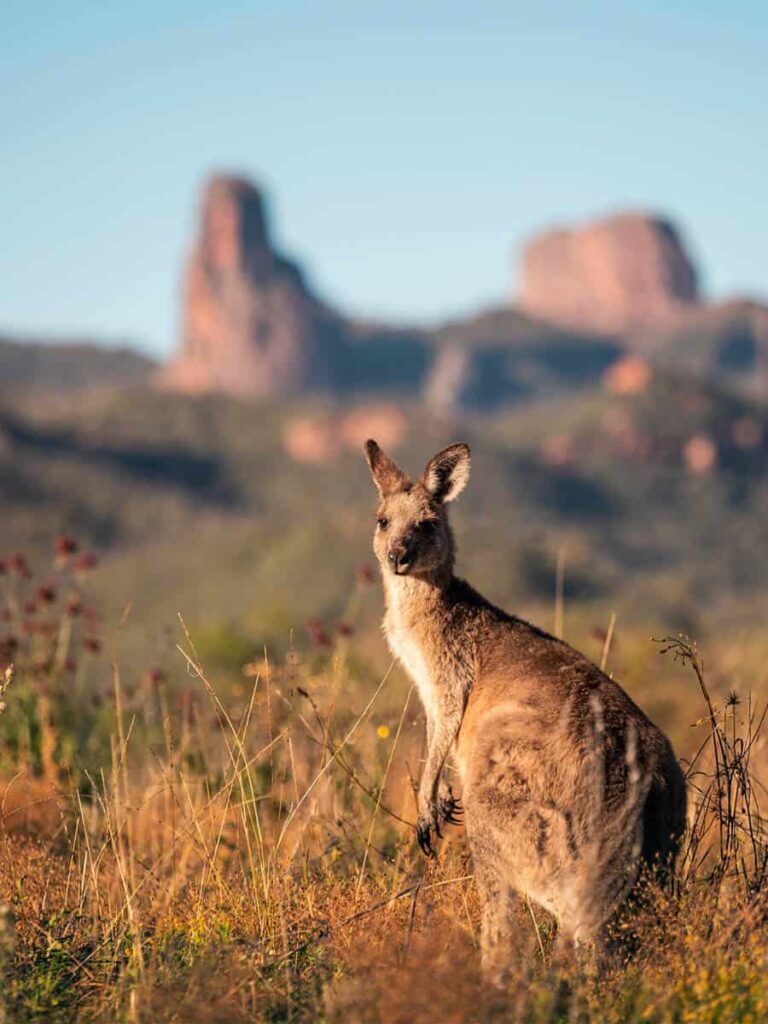
As well as exploring this iconic forest that’s known across the country for its rugged landscape, Coonamble boasts Australia’s biggest rodeo and campdraft. Not a bad feat for a town with less than 3,000 people living there.
It features wide streets, old art deco buildings, and has a slower pace of life synonymous with rural Australia.
If you’re not sure what to do in Coonamble and Pilliga Forest, then you’ve come to the right place.
In this guide we share the top attractions of this town and share our favorite activities that you should add to your itinerary.
Disclaimer: This post was sponsored by Dubbo Regional Council, but all thoughts, ideas and opinions in this guide are our own.
Things to Do in Coonamble, NSW
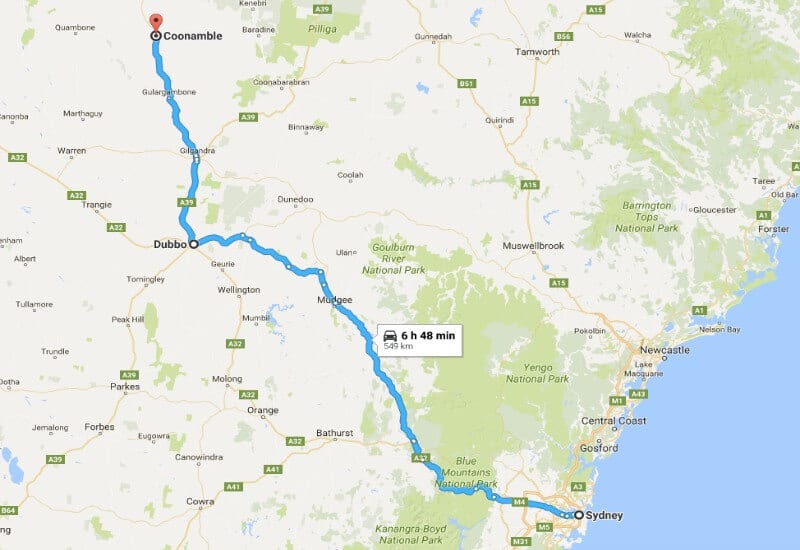
Coonamble (pronounced Coo-nam-bull) is located on the Castlereagh River, along the Castlereagh Highway half way between Dubbo and Lightning Ridge.
It makes for a great pitstop on the way to the Outback. I would suggest allowing at least a week to enjoy all there is to see and do.
April or May are ideal times of the year to visit Coonamble as the days are warm and sunny, with just a hint of a chill at night time.
Here are some awesome things you can do there…
1. Get To Know The Nickname Hall of Fame
Coonamble is also sometimes referred to as Australia’s nickname capital.
The Nickname Hall of Fame is a quirky way to celebrate the characters who live or have lived in Coonamble.
Take a walk along the main street and you will find about a dozen caricature portraits on billboards.
Each portrait expresses the particular traits and personality that each person was known for. You can ‘meet’ local characters like Tumbler, Ghost, Icey, Vanderbilt, Darla and Bricky.
As nicknames are a very personal thing, it is not always known how people acquire their nicknames. At least for the folks of Coonamble, this is no longer a mystery.
2. Check Out The Museum Under the Bridge
Just off the main street of Coonamble, you will find the Museum Under the Bridge.
The building was the former colonial police station and barracks and comes complete with the original Police stables. Many of the displays will take you back in time to the beginnings of Policing in the area.
Built in 1886, the Museum Under the Bridge has an excellent collection of memorabilia. Items on display include the dock from the old Coonamble Courthouse, household goods, photographs, clothing, and descriptions of the history of the area.
Run by a small band of dedicated volunteers, the museum is open to the public Monday, Wednesday, and Friday from 10am to 12 midday. The museum can be open at other times by request. Entry will cost you a gold coin donation.
3. Explore Nakadoo Working Farm
Nakadoo is a working farm just two kilometres from Coonamble and it’s where we stayed during our visit.
A labour of love for owners Karren and husband Naka, this unique property is available for campers and caravanners to stay free of charge. If you aren’t a camper or caravanner you are still welcome to come and visit Nakadoo.
Also at Nakadoo, you will find ‘The Shed’ which is a fantastic museum, dedicated to rural life.
Included in the display are shearing implements, farm equipment, a wall and windows from a nearby farmhouse that was to be demolished and plenty of memorabilia from the Coonamble rodeo circuit of which Naka is heavily involved in.
Karren’s knowledge of the history of the area and her passion for Coonamble is obvious as she leads you through the museum. Afterward, you can enjoy a cuppa and maybe even some fresh damper.
Naka and Karren also run horse-drawn wagon tours of the area. As these tours are seasonal, bookings are required to ensure that a team of horses will be available.
Naka’s horses are beautiful. I felt very privileged to meet ‘Lucky’ who is an enormous Shire draft horse who frequently pulls the Nakadoo wagon.
For the kids, Nakadoo’s farm yard has animals galore. Guinea pigs, rabbits, chooks, geese, goats, and llamas all live in happy harmony.
4. Check Out The Water Tower Art
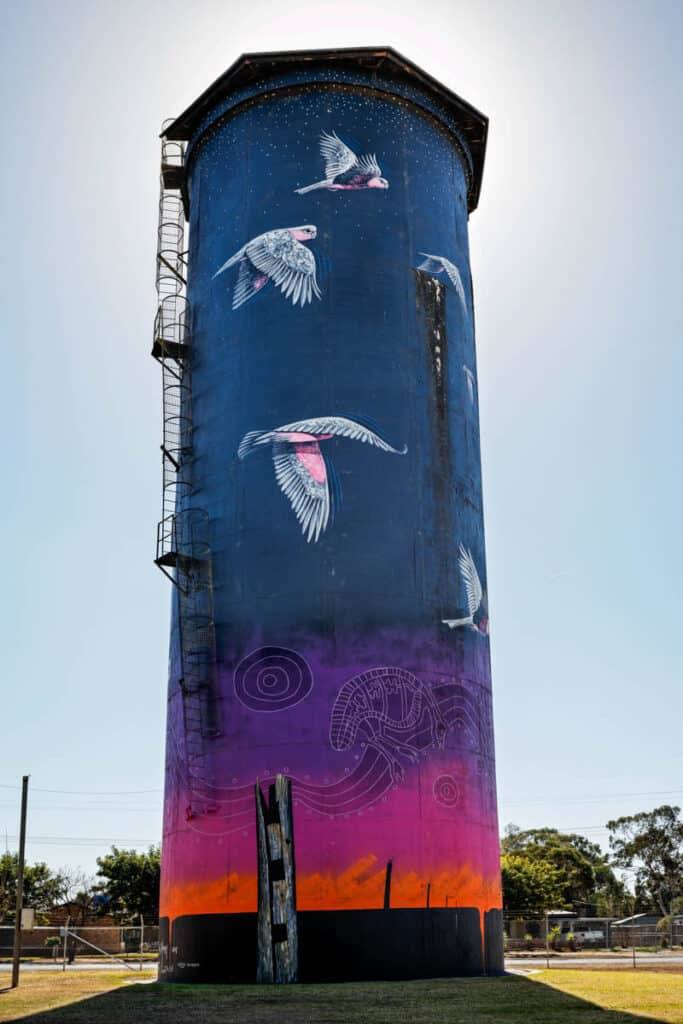
What makes Coonamble unique is the abundance of art murals dotted all over the town. One of the most notable though is the Water Tower, painted by John Murray.
The silo features a beautiful display of Galah birds, a pinkish cockatoo which is native to Australia.
Coonamble is a small country town of art, so be sure to wander around and take in the other murals in the town as well.
5. Visit The Outback Arts and Creative Centre
See works of art by regional artists and indigenous artists in this small art gallery.
Every year in September, the museum hosts the Outback Archies Annual Art Prize, which is well worth checking out if you’re visiting this time of year.
6. Attend the Coonamble Rodeo and Campdraft
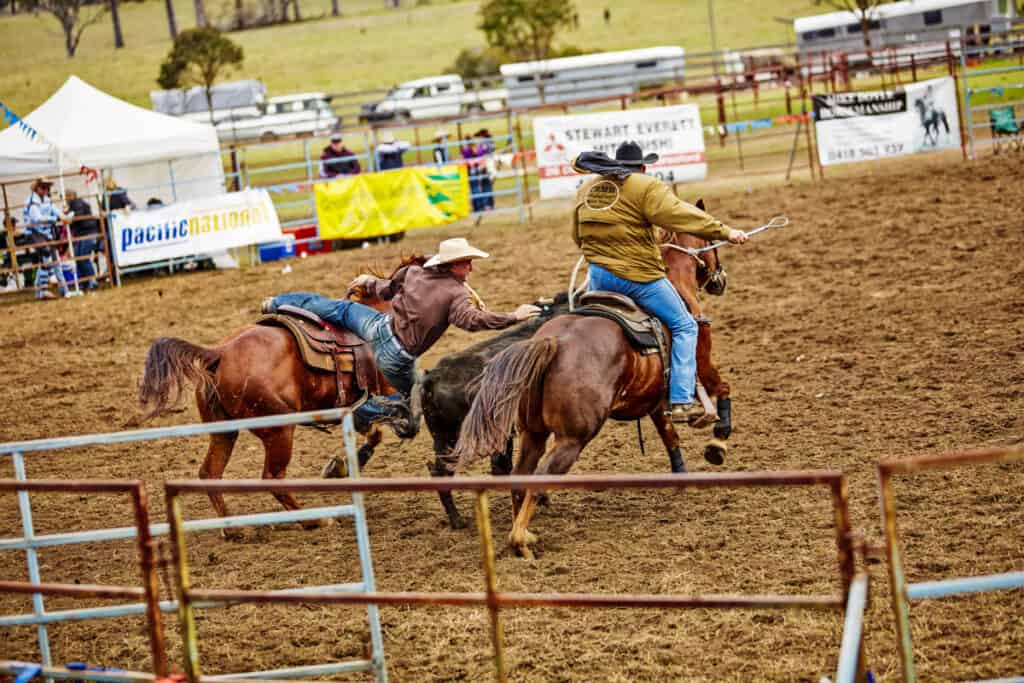
Every year in June, Coonamble hosts Australia’s biggest rodeo, which lasts over a long weekend.
See more than 1,000 cowboys and cowgirls from across the country, not just Coonamble Shire, show off their skills and talents at the Coonamble Rodeo and Campdraft.
The rodeo features bull riding, steer wrestling and calf roping events and attracts thousands of people across the country.
7. Sit Back and Relax in a The Bucking Bull Hotel Pub
Enjoy the rural hospitality of Coonamble by sitting back and relaxing in one of the classic country pubs.
The Bucking Bull Hotel is a prime example of a rural, small town Australian pub. It has wholesome food, good beer, and live music and entertainment on select nights of the week.
If you’re visiting in the summer, they have the largest beer garden in town, and a Pool competition every Sunday.
The pub itself is a piece of history, having been operating as a hotel since the 1880s. It features many classic homewares and memorabilia that tell of its long-standing history.
It’s the oldest surviving hotel in Coonamble and is also considered to be haunted, if you believe in such things.
8. Take A Leisurely Stroll Along Gulargambone Riverwalk
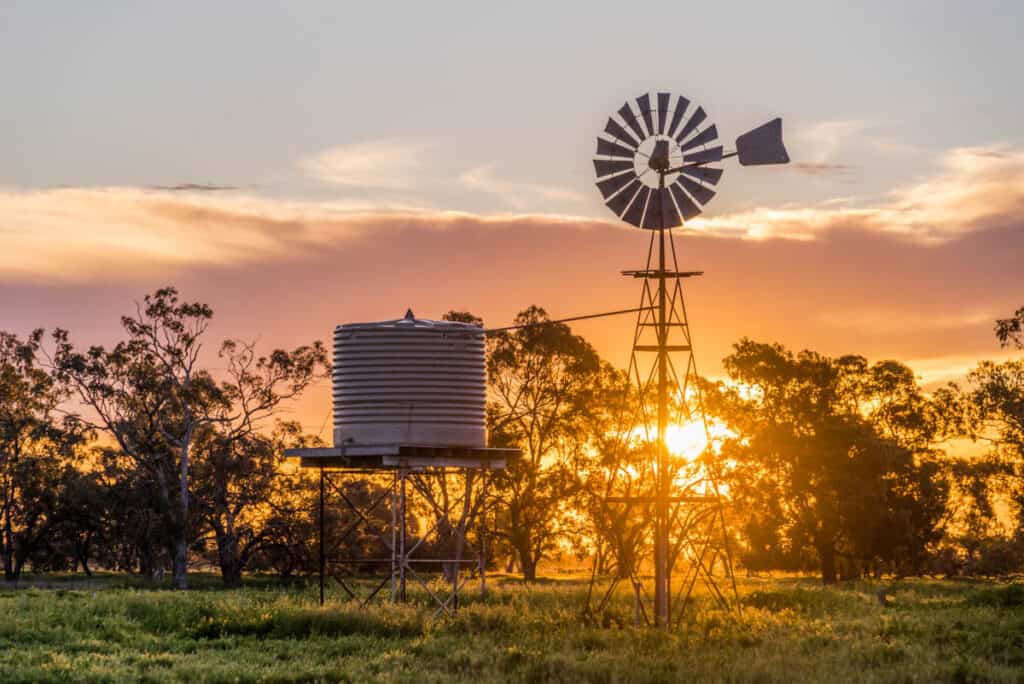
For those looking for easy walking trails to do near Coonamble, consider taking a walk along the Gulargambone Riverwalk.
This short walk is only a 420 meter path that connects two bridges behind Bourbah Street in nearby Gulargambone.
The reason to walk this small path is for the six, artistic sculptures that line the trail.
9. Visit Nearby Siding Springs Observatory
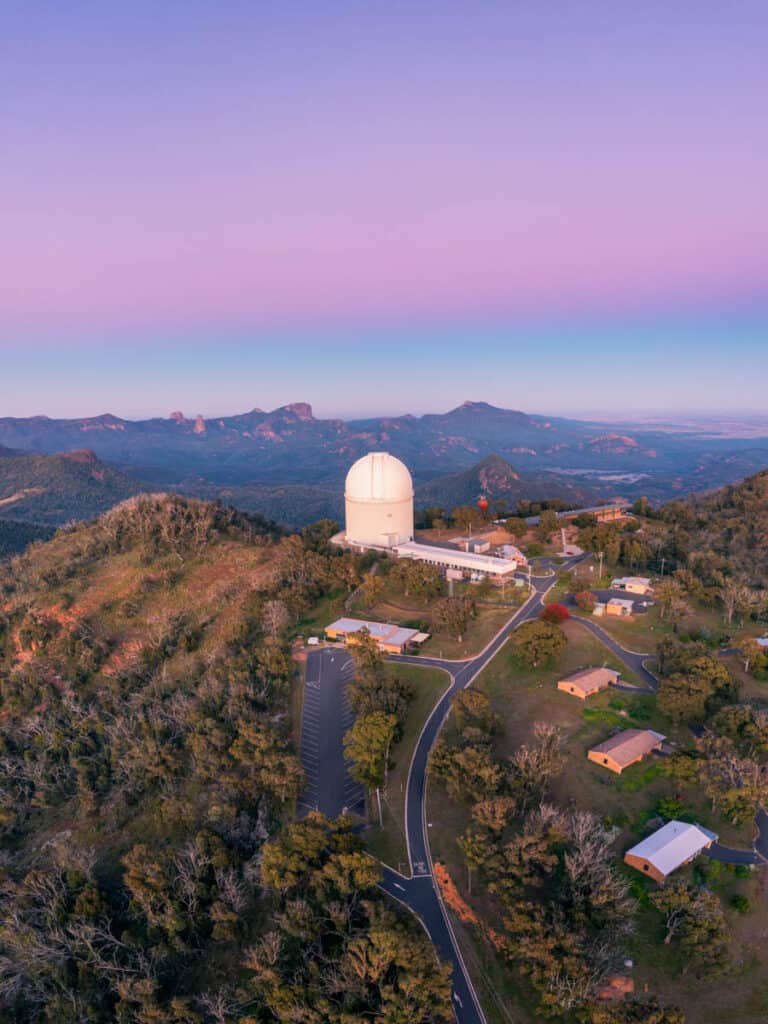
If you fancy yourself as an astronomer, consider a trip to Siding Spring Observatory to observe the night sky.
The Warrumbungles area is known as the Astronomy Capital of Australia, and this observatory has the largest telescope in the country.
If you visit during the day, you can check out the small but well informed visitors gallery, or you can sign up for a night time stargazing experience at The Getaway Tourist Park.
No need to pack up your own telescope, as they have their own high-tech, powerful telescope which gives you a spectacular view of the Milky Way and the nearby planets.
Learn about star formations, discoveries, and gaze at clusters of millions of stars.
10. See Warrumbungles’ Volcanic Formations
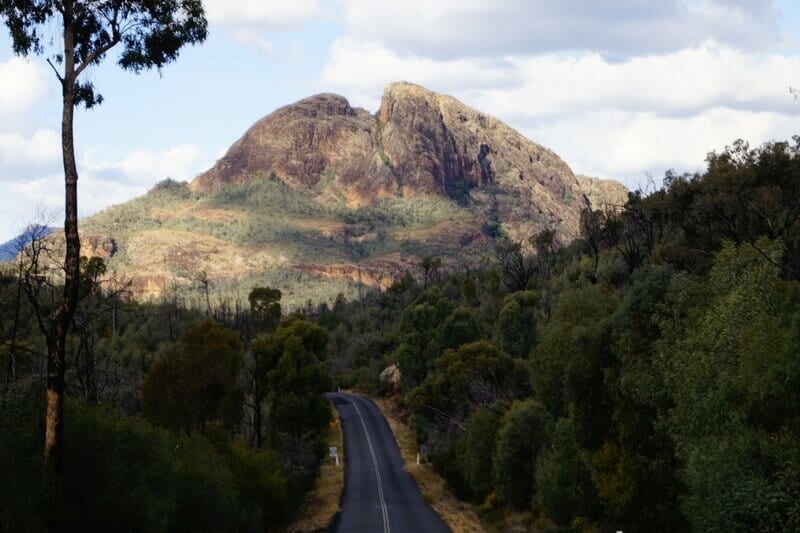
The Warrumbungles National Park is one of the main reasons why people venture up to the Southern Cross region. It’s unique, ancient landscape is the most iconic feature of this region and should not be skipped.
Formed over 13-17 million years ago, the Warrumbungles are a series of volcanic rock formations that were once part of a large, heavily eroded shield volcano.
The word Warrumbungle is a gamilaroi word meaning “crooked mountain” and is a testament to the type of natural wonders you see here.
The most iconic rock formation in the Warrumbungle’s National Park is the volcanic dyke known as the Breadknife. It’s one of the largest dykes in the park, and is said to measure at 600 meters wide by 90 meters tall.
Things to Do in the Pilliga Forest
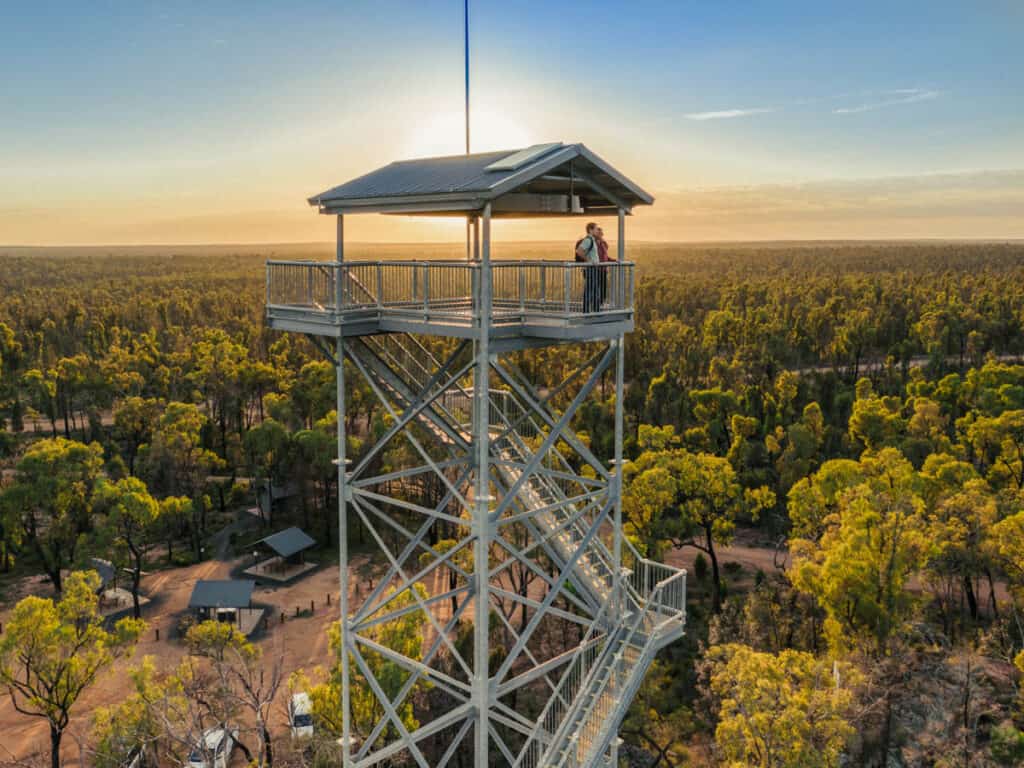
As mentioned earlier, Coonamble is the gateway to the Pilliga Forest, also sometimes called Pilliga Scrub or Pilliga Nature Reserve.
This vast area of National Park and State Forest that covers an area of half a million hectares is located between Narrabri in the north and Coonabarabran in the South, and covers an area of about 3,000 square kilometres.
The Pilliga is an area of great biodiversity and is home to around 300 native animal species and over 900 plant species. With its scrubby woodlands, vivid orange soils and rocky outcrops, the scenery is truly unique.
To access most parts of The Pilliga you will have to drive on rough, sandy and corrugated roads. Many of these roads become impassable in wet weather. At all times, use caution when driving in this area.
11. Visit The Pilliga Forest Discovery Centre
Before you venture into the Pilliga, I highly recommend visiting the Pilliga Forest Discovery Centre.
Located in the tiny town of Baradine, the very knowledgeable staff will provide you with all the information you need to know before you head out into the Pilliga itself.
It also houses a very interesting, interactive display of the flora, fauna and Aboriginal Cultural Heritage of the area.
Also in Baradine, you will find the lovely Freckles Coffee Spot. Here you can enjoy some morning tea or lunch in Baradine’s former Embassy Theatre.
If you are looking for accommodation, Camp Cypress has plenty to offer ranging from cabins to campsites.
12. See Sculptures in the Scrub
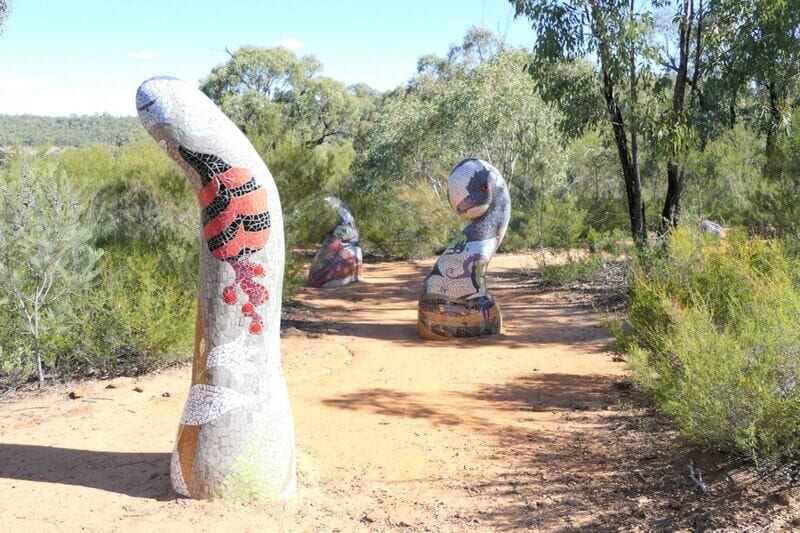
In my opinion, Sculptures in the Scrub should be your number one reason for visiting the Pilliga region.
Located in the Timmallallie National Park section of the Pilliga, about 40 kilometres east of Baradine, this group of five sculptures scattered along a 1.2 kilometre long walking trail will take your breath away.
Inspired by the Aboriginal cultural heritage of the area, they sit high upon the Dandry Gorge, which is a place of special significance for the Gamilaroi people.
The views are spectacular from the rugged, rocky outcrops of the cliff face high on the other side, to the peaceful serenity of the valley below. This is a truly special place.
The return walk is about 3-kilometres long. At the start of the track, there is quite a steep incline of steps. A reasonably good level of fitness is required as this track is rated medium difficulty.
You can also take a guided discovery tour of sandstone caves and salt caves in the region, which is well worth it.
13. See Pilliga Pottery and Barkala Farmstay
Tucked away on the eastern side of the Pilliga Forest you will find the beautiful Barkala Farmstay. Barkala is also the home of Pilliga Pottery.
As soon as I walked into the courtyard area I felt myself relax. The courtyard has an almost Mediterranean feel to it, with its dolphin fountain, shady trees and terracotta hues.
The pottery itself is breath-taking in its beauty. Much of it features the tiny blue wrens which can be seen flitting around the farm. The colours are so vivid and the attention to detail is evident in each piece.
Be prepared to pay a hefty price though if you want to take a piece home with you.
However, the onsite Blue Wren Bush Cafe was nowhere near as expensive and we enjoyed a coffee and delicious homemade Apple Crumble with fresh cream.
If you would like to stay awhile at Barkala there are several accommodation options available.
These include lodge accommodation, guest houses, and a campground. There is also a beautiful swimming pool available for guests to use in the warmer months.
Other places to stay in Coonamble
Apart from the campgrounds and free camping places recommended in this post, here are few other Coonamble accommodation options you may like:
- Terminus Hotel has new rooms with a convenient location in town and next to the pub! See rates and availability.
- Coonamble Riverside Caravan Park has accommodations, a garden, and barbecue facilities. See rates and availability.
- The 1920 3-bed charming cottage is right in town. You will feel right at home, enjoy the fresh country air on the deck boasting a BBQ and fireplace. See rates and availability.
Final Thoughts
We loved our time in the Coonamble and Pilliga region. The natural beauty, the quirkiness of rural Australia and the slow pace of life was really refreshing to experience.
We hope this guide gave you some inspiration for things to do in Coonamble and the Pilliga Forest and helped you map out your itinerary.
Save this to Pinterest
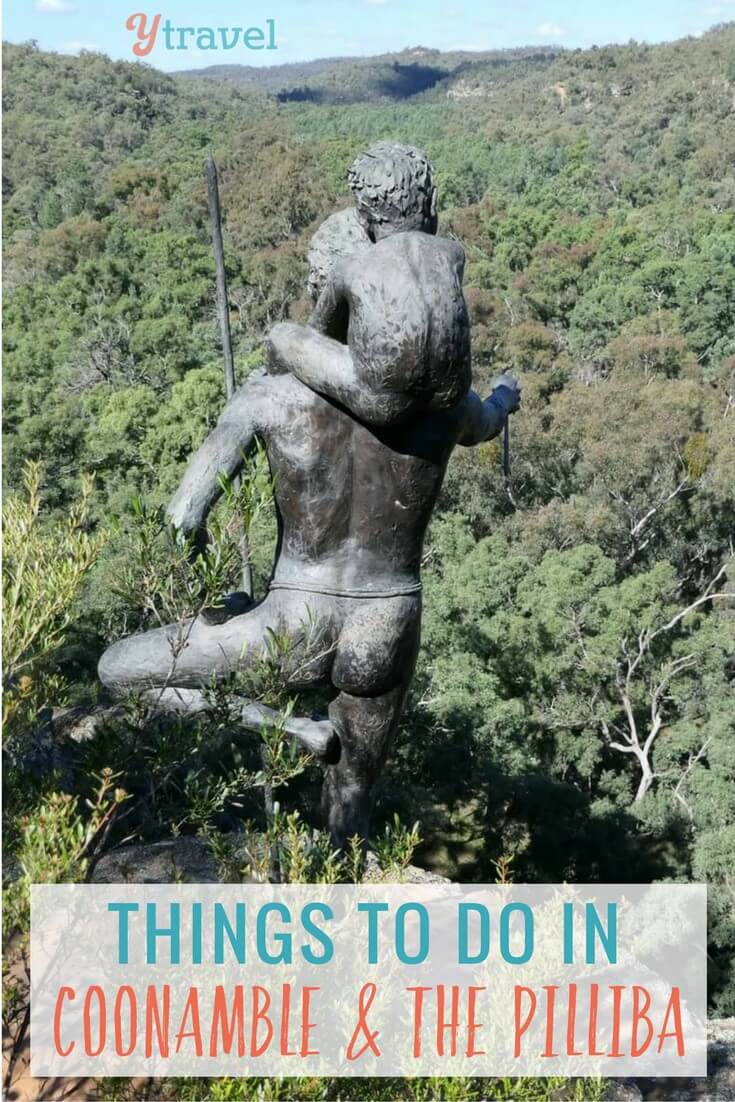
Did we miss anything? Can you add any other tips on things to do in Coonamble or the Pilliga? Let us know in the comments.
[ad_2]
Source link
